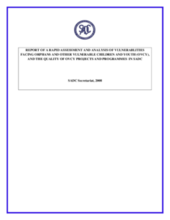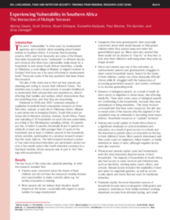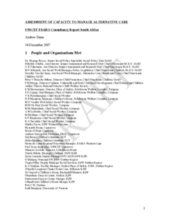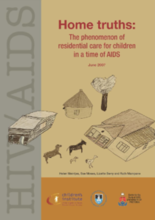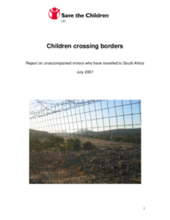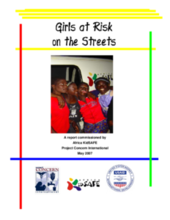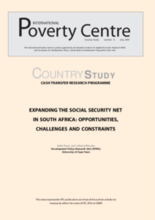childrens_living_arrangement
children_living_without_bio
Displaying 301 - 310 of 334
This study sought to assess, analyse and inform the different forms of vulnerabilities affecting children and youth, and their effects and existing strategies and programmes addressing the challenges and vulnerabilities facing orphans, vulnerable children and youth (OVCY) in the Southern Africa Development Community (SADC) region. The study also sought to propose recommendations for improvement, and development of minimum standards for OVCY and the finalisation of the SADC OVCY Strategic Framework.
Research study aimed at understanding the meaning of vulnerability and it's impact on parent's future planning for children in the context of poverty in Malawi and South Africa
Country level evaluation of contributing factors to the establishment of an alternative care system.
Two families in South Africa absorb children who have lost one or both parents to AIDS. Their story.
A report on residential care in South Africa in the context of AIDS and an under-resourced social welfare sector.
This study aimed to gain insight into the migration experiences of children who cross international borders unaccompanied.
L’Afrique du Sud a ete confrontée au fardeau écrasant d’avoir le plus important nombre de personnes atteintes du SIDA partout au monde. Par conséquent, le VIH/SIDA a joué un rôle assidu dans l’affaiblissement des mécanismes familiaux et communautaires de protection des enfants, qui se traduit par un affaiblissement de la capacité des enfants à se protéger.
A report that identifies gaps and provides recommendations for protecting and supporting girls living on the streets. It provides models of good practices from Ghana, Kenya and Zimbabwe.
Examines constraints to expansion of the social welfare net in South Africa. Cites substitution taking place within the social budget since education and health expenditures have already declined in favour of increased welfare transfer expenditures.
Investigates the AIDS mitigation impacts of several large social cash transfer programmes in Africa. Emphasis on investigating non-specific targeting (of poor families) versus targeting specific to households affected by AIDS.

